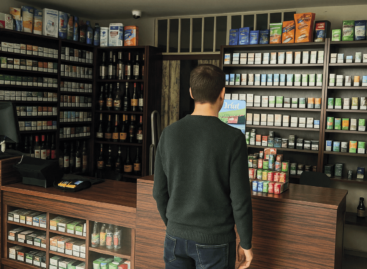RetailZoom: New time-zones changing shopping habits yet again…
Although the big-scale “stock-up syndrome” witnessed in the first three weeks of March seems to slow down in the Hungarian retail sector, a newly enacted legislation has yet again transformed the way costumers’ shop in Domestic Chains. As it is well-known, a new governmental directive ensures that people aged 65 or over must carry out their shopping in morning hours (between 9am-to 12:00), a time-window fully dedicated to these people across Hungary.

Andreas Christou
But how has this affected the hourly sales turnover figures of Domestic Chains? Well, in the last two weeks, as one might have expected, value sales have fallen significantly in the concerned time period (9-12h), thanks largely to the limitation of the shopper demographic, generating 53% less Sales then in the same period as opposed to last year. When looking at the remainder of the opening hours, value sales has peeked by 12% versus year ago thanks to people resuming a “lesser” version of the “stock-up syndrome”.
If we take a closer look at the sales value figures by category (in each case comparing those value figures to the same period last year), there are some interesting developments unfolding: out of the categories with significant sales, Energy & Vitamin Drinks, Single-serve Soft Drinks, Ciders & Flavored Beer, as well as Chewing Gums have fallen by the largest margin (between 75% and 95%). “Baby Categories” have almost completely gone to the alternative time-windows. Cereals, Sweets and other Snacks have also dropped larger than the average (65-75%). Various Dairy categories have also been drastically affected in this time period following the restriction.
If we take into account that value sales has dropped by a staggering amount (-53%) during the “elder time-zone” than categories that remained flat or managed to grow their sales versus last year have actually undergone an increase in sales as they have achieved these numbers despite 81% less units sold. Here are the honorable mentions that managed to achieve such a feat: various meat categories (Chicken, Turkey, Duck, Smoked meats), Canned Foods, Baking items, and in the non-food section, Detergents and Cleaning products were those that managed to maintain or peek their sales despite the low numbers of shoppers. This indicates that our pensioners are also impervious to the “stock-up syndrome” as they are now upgrading to bigger pack-size or more expensive products.
Examining the transactions from a different angle, we find that since the 28th of March, 65+ aged shoppers, accounted for 17% of all Value Sales generated in the Domestic Chains. However, there are several categories where instead of 17% value sales our elders have accounted for quarter (25%+) or more of total domestic sales in mere 3 hours. Some of these categories are essential food products, like Sugar, Salt, Vinegar, Baking Items, or fruits. Not to our surprise Diabetic Food is also on our list, however, this list is extended with items such as Honey, Jams, Margarines, as well as Newspapers. In all these categories our seniors are overrepresented.

Related news
There is light at the end of the tunnel
🎧 Hallgasd a cikket: Lejátszás Szünet Folytatás Leállítás Nyelv: Auto…
Read more >This is how Hungarian researchers model epidemics
🎧 Hallgasd a cikket: Lejátszás Szünet Folytatás Leállítás Nyelv: Auto…
Read more >Tobacco shops: fewer products, concentrated sales and new growth paths
🎧 Hallgasd a cikket: Lejátszás Szünet Folytatás Leállítás Nyelv: Auto…
Read more >Related news
Egg prices up nearly one-third
🎧 Hallgasd a cikket: Lejátszás Szünet Folytatás Leállítás Nyelv: Auto…
Read more >Too many gifts, too much food: our holiday excesses are putting a serious strain on the environment
🎧 Hallgasd a cikket: Lejátszás Szünet Folytatás Leállítás Nyelv: Auto…
Read more >You can now pay utility bills with qvik
🎧 Hallgasd a cikket: Lejátszás Szünet Folytatás Leállítás Nyelv: Auto…
Read more >






